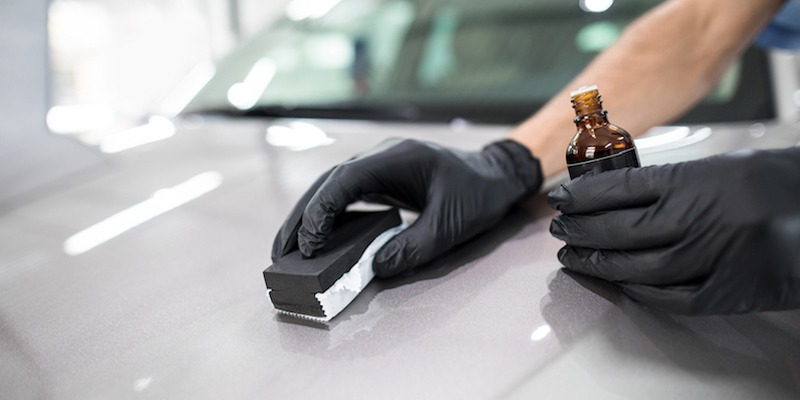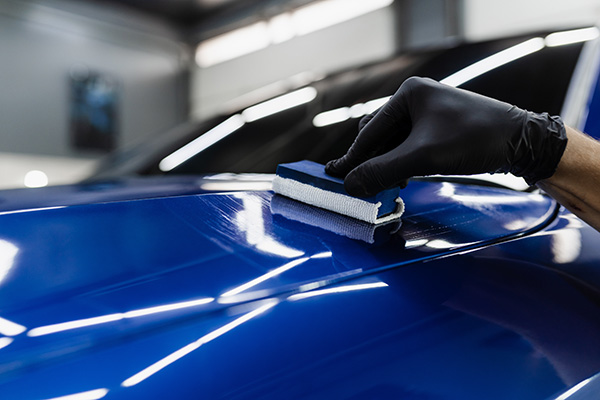Checking Out Various Types of Ceramic Coating for Numerous Vehicle Finishes
Checking Out Various Types of Ceramic Coating for Numerous Vehicle Finishes
Blog Article
The Value of Ceramic Coating: Safeguarding Your Cars and truck's Exterior With Precision
In a period where maintaining the aesthetic and practical honesty of your vehicle is vital, ceramic finish emerges as a crucial remedy. With its one-of-a-kind bonding buildings, ceramic finishing supplies a level of protection that far surpasses standard waxing approaches.
Advantages of Ceramic Coating
When it comes to preserving an automobile's visual charm, ceramic finish uses significant benefits. This innovative protective layer offers a durable shield versus environmental impurities, including dust, grime, and dangerous UV rays. By creating a semi-permanent bond with the car's paint, ceramic layers properly stop oxidation and fading, making certain that the auto maintains a glossy, showroom-like coating for an extensive duration. This not only enhances the car's aesthetic allure but also contributes to its lasting worth.
Along with its safety qualities, ceramic coating uses impressive hydrophobic properties, triggering water and various other liquids to grain off effortlessly. This attribute streamlines the cleaning procedure, as dust and particles are much less likely to abide by the surface, minimizing the regularity and effort required for maintenance. Moreover, the finishing's resistance to chemical discolorations from acidic impurities like bird droppings and tree sap is one more noteworthy benefit, lessening possible paint damages.
Ceramic finishings also boost scratch resistance, supplying a layer that can soak up small abrasions and swirl marks. This attribute is especially beneficial in preserving an excellent surface, minimizing the chance of visible flaws and maintaining the stability of the vehicle's paintwork gradually.

Exactly How Ceramic Finishing Works
Recognizing the auto mechanics behind ceramic coating exposes its effectiveness as a safety remedy for automobiles. Ceramic coatings are essentially fluid polymer applications that chemically bond with a cars and truck's factory paint, producing a safety layer. This layer acts as an obstacle against ecological impurities such as ultraviolet, dust, and gunk rays, which can break down a vehicle's outside with time. The essential part in ceramic coating is silicon dioxide (SiO2), which originates from quartz crystals and is understood for its phenomenal solidity and sturdiness.
Application of ceramic coating includes a careful procedure. This guard enhances the car's gloss and hydrophobic residential or commercial properties, helping with less complicated cleaning by triggering water and impurities to grain and slide off easily.
Furthermore, the finishing's molecular structure gives resistance to minor scrapes and chemical stains. Unlike waxes or sealers that rest on top of the paint, ceramic layers integrate with the surface area, providing long-lasting protection. This assimilation is basic to its performance, making certain the automobile's coating stays excellent for many years.
Comparing Ceramic Coating to Alternatives
In the world of auto defense, ceramic covering stands as a formidable option when compared to standard options such as waxes and sealers. While waxes provide a short-term shiny surface, usually lasting resource only a few weeks to months, ceramic finishings provide a longer-lasting service, typically enduring for years. This sturdiness is credited to the chemical bonding that happens when ceramic coverings are used, developing a solid layer that is immune to ecological threats.
Contrastingly, sealants, although more resistant than waxes, still disappoint the robust protection used by ceramic finishes. Sealants can generally last for as much as a year, giving an artificial shield versus specific elements. Nevertheless, they do not have the remarkable hydrophobic buildings and UV defense that ceramic layers deliver.
In addition, ceramic layers use boosted scrape resistance, which neither waxes neither sealants can successfully match. In summary, while typical waxes and sealants use standard security, ceramic finishings provide a thorough, lasting remedy that considerably improves and maintains the vehicle's outside finish.
Application Process Described
Using ceramic finishing to an automobile requires a careful process to guarantee optimum outcomes and sturdiness. The initial step involves thoroughly cleaning the vehicle's surface area to get rid of dust, oil, and previous waxes. This is important for making certain the finishing adheres properly. A pH-neutral hair shampoo and a clay bar therapy are often made use of to achieve a pristine surface area. When cleaned, the car is dried and polished to get rid of any type of imperfections, as any type of existing swirls or scratches can end up being extra pronounced after the finish is used.
Following surface prep work, the application of the ceramic finish starts. Utilizing an applicator pad, the ceramic finish is used in small areas to make sure even coverage.
After application, the coating calls for a details healing period, throughout which the automobile ought to be safeguarded from water and contaminants. This treating process can vary relying on the item yet usually varies from 24 to two days. Ultimately, this thorough process is essential in attaining a durable and glossy finish.
Upkeep Tips for Longevity
To maintain the longevity of a ceramic finishing, adherence to a disciplined maintenance routine is crucial. Stay clear of automated cars and truck washes, as their rough brushes can compromise the layer's stability.
Post-wash, drying out the lorry with a tidy microfiber towel avoids water places that might degrade the finish gradually. Additionally, apply a ceramic layer booster every find out here now couple of months. These boosters enhance the hydrophobic homes and boost the covering's protective abilities, guaranteeing it stays efficient versus impurities.
Maintain in mind that auto parking locations play a critical duty in maintenance. ceramic coating. Whenever possible, park in shaded locations to lessen UV direct exposure, which can progressively damage the coating. For lasting storage, consider making use of a vehicle cover for added defense versus ecological aspects
Verdict
To conclude, ceramic finishing functions as an important safety layer for automobile exteriors, using durable protection versus environmental elements such as dirt, uv, and grime rays. By developing a semi-permanent bond with the paint, it improves visual charm while maintaining the auto's value. Its hydrophobic residential or commercial properties help with much easier upkeep, identifying it from alternate protective methods. Comprehending the application procedure and sticking to maintenance referrals are vital for maximizing the long life and effectiveness of ceramic covering.
When it comes to maintaining a car's aesthetic appeal, ceramic layer supplies considerable benefits. By creating a semi-permanent bond with the lorry's paint, ceramic finishes efficiently prevent oxidation and fading, ensuring that the car keeps a glossy, showroom-like coating for a prolonged period. Ceramic coatings are essentially liquid polymer click here to find out more applications that chemically bond with an auto's manufacturing facility paint, producing a protective layer. In recap, while typical waxes and sealers use basic protection, ceramic coatings provide a thorough, long-lasting service that substantially boosts and maintains the vehicle's outside coating.

Report this page